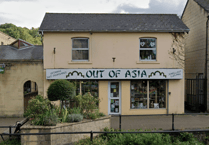A sample of the best chocolate most had ever tasted or smelt was given to Midsomer Norton and Radstock Inner Wheelers when retired chocolatier, John Gingell, gave them a talk on ‘From Bean to Bar’.
John had made the hand-tempered chocolate, similar to an 1803 recipe, which he now uses for the talks on the history and methods of chocolate making.
He brought with him a large display of chocolate memorabilia, all of which could one day be part of a Fry’s museum in the redeveloped former Keynsham chocolate factory, where John was a Cadbury’s chocolatier for forty years.
South American Indians first made chocolate liquor 3,000 years ago and, during its evolvement over the centuries, cocoa beans have been seen as a food for the gods, a medicine and as a currency for favours, as well as for drinking and eating.
“British chocolate bars are considered the best in the world, with American not to European taste,” said John, a former Olympic squad athlete, who held the British indoor 800 metres title before Sebastian Coe took them from him nine years later.
Switzerland marketed the first milk chocolate bar in 1875, and Fry’s with Five Boys in 1902, but nowadays Swiss and Belgian chocolate is considered too smooth for the UK taste, said John, as their recipes use cheaper lecithin, soft oils, instead of cocoa butter and different particle sizes.
Swiss chocolatiers, Barry Callebaut, will soon introduce a ruby chocolate using a new process made from beans grown in Ecuador and Brazil. The chocolate group, Mondelez (which includes Cadbury’s Fry) will also be releasing a chocolate made from the whole chocolate fruit (pod) and named cocoa fruit, using the sweet pulp as one of the sweeteners.
Members drooled over memories of Fry’s and Cadbury’s famous chocolate bars; cream eggs, Crunchie, Turkish Delight, Five Boys being just a few. They were fascinated by the chocolate-based artefacts, many of which have been unearthed and donated from people’s attics after they heard John’s talks.
Sue Meadows




.png?width=209&height=140&crop=209:145,smart&quality=75)
Comments
This article has no comments yet. Be the first to leave a comment.